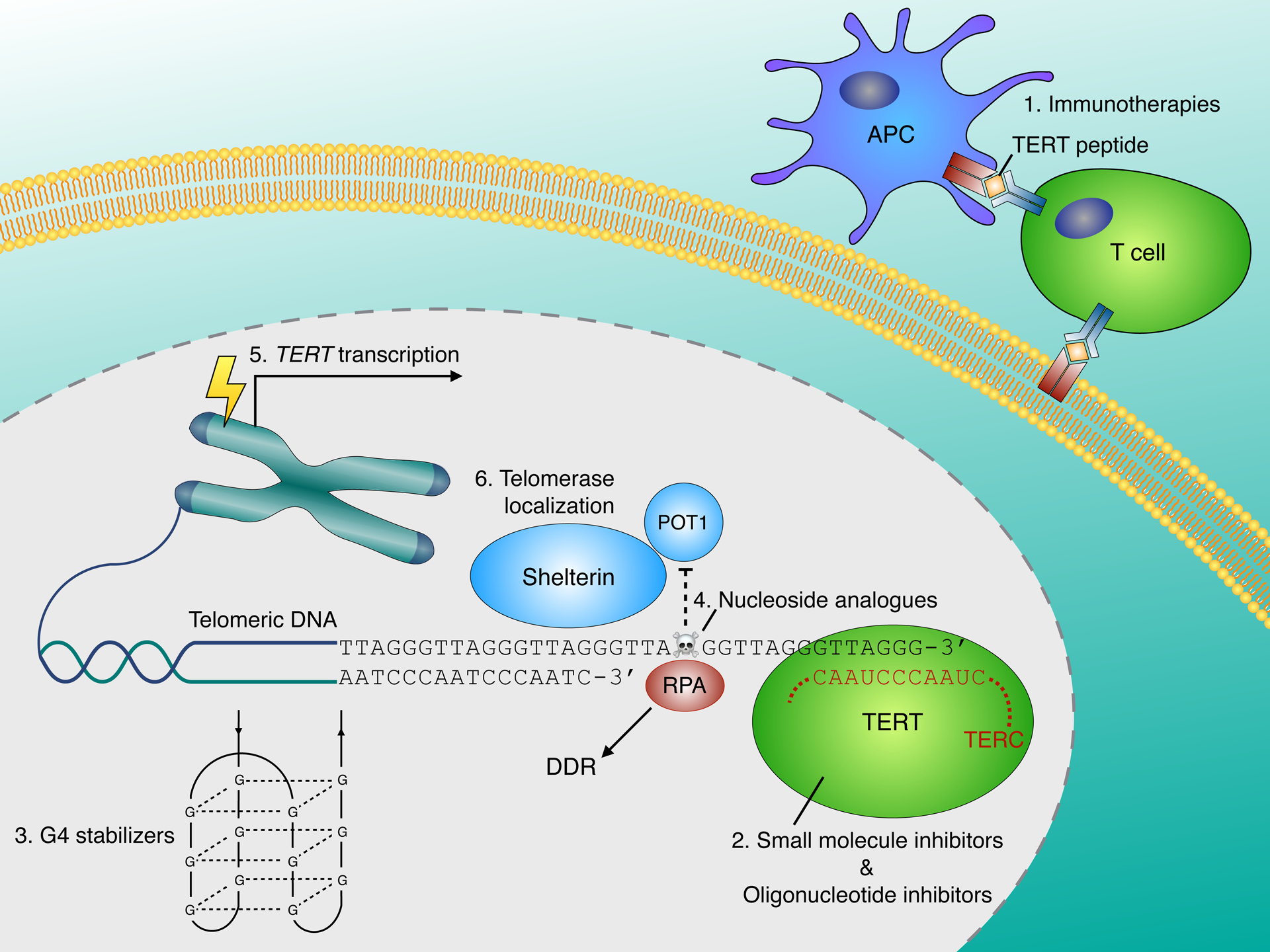Figure 1 –

Therapeutic strategies for targeting telomerase
Approaches to targeting telomerase include: 1. Immunotherapies - Peptide or DNA vaccines supply immunogenic TERT epitopes that stimulate immune responses against telomerase-expressing cancer cells. Adoptive cell transfer therapies entail the infusion of telomerase-specific cytotoxic T-cells. 2. Direct telomerase inhibitors – small molecules can bind to TERT and inhibit its catalytic activity resulting in gradual telomere attrition. Alternatively, oligonucleotides complementary to the TERC template region can act as competitive telomerase inhibitors. 3. G-quadruplex (G4) stabilizers disrupt telomerase function by blocking the resolution of telomeric G-quadruplex DNA. 4. Incorporation of nucleoside analogues into newly synthesized telomeres impairs POT1 binding, causing telomere dysfunction that elicits a DNA damage response and cell death. 5. Targeting TERT gene expression - TERT promoter mutations (TPMs) generate novel binding sites for ETS transcription factors that reactivate TERT expression in cancer (see Figure 2). Targeting regulation of the mutant TERT promoter represents an emerging approach. 6. Disrupting telomerase localization – interference with telomerase recruitment mediated by TCAB1 and shelterin subunits elicits telomere dysfunction.
